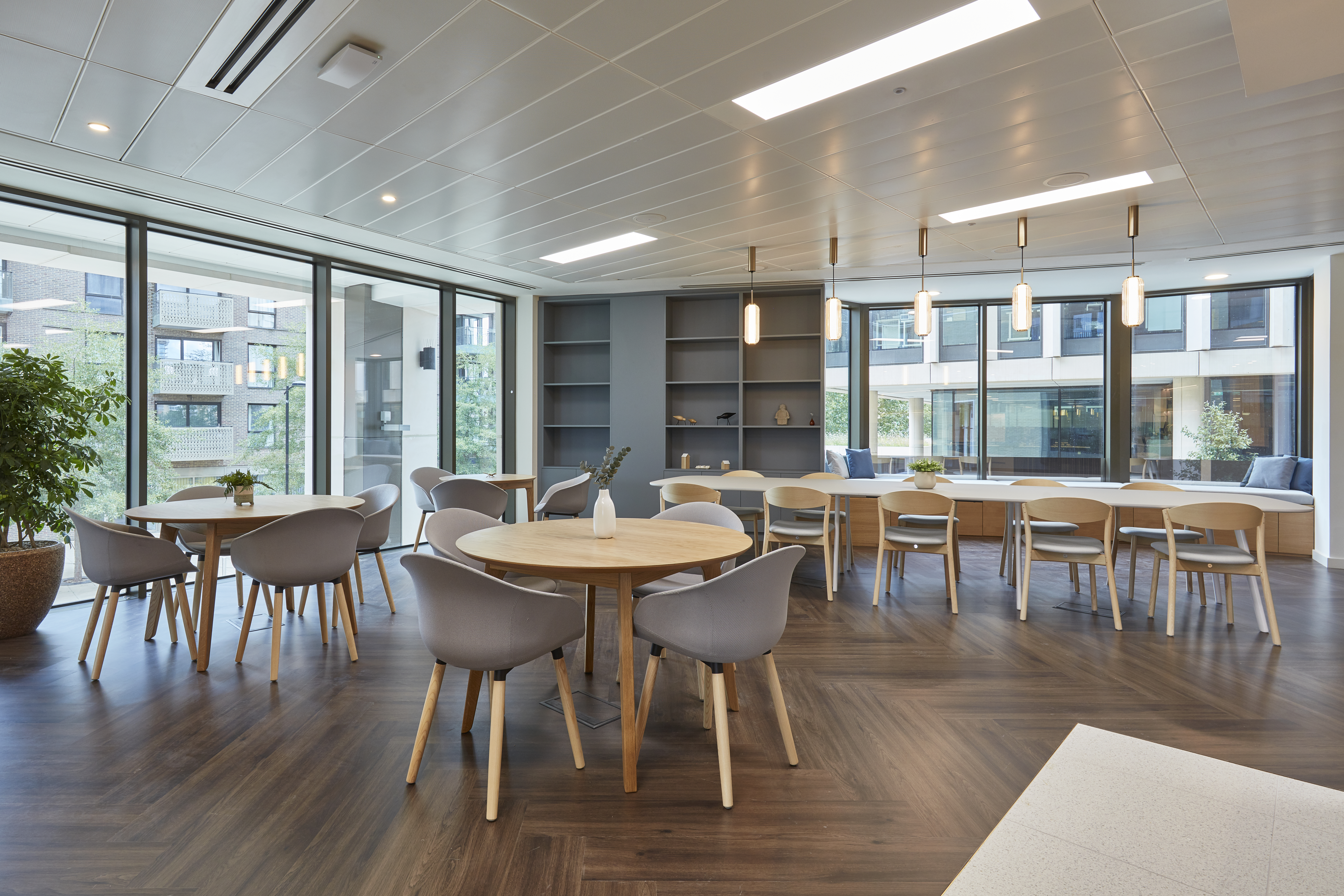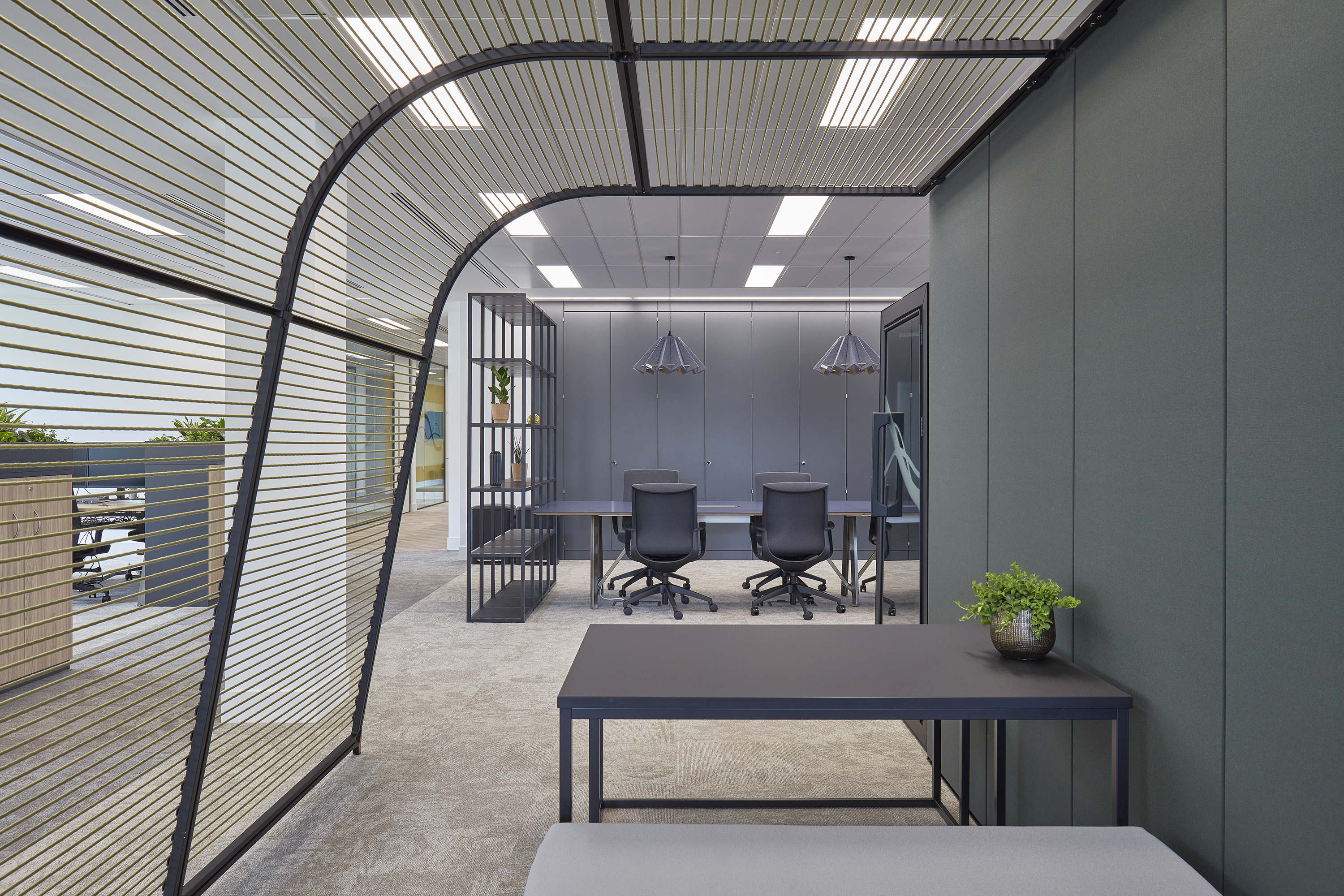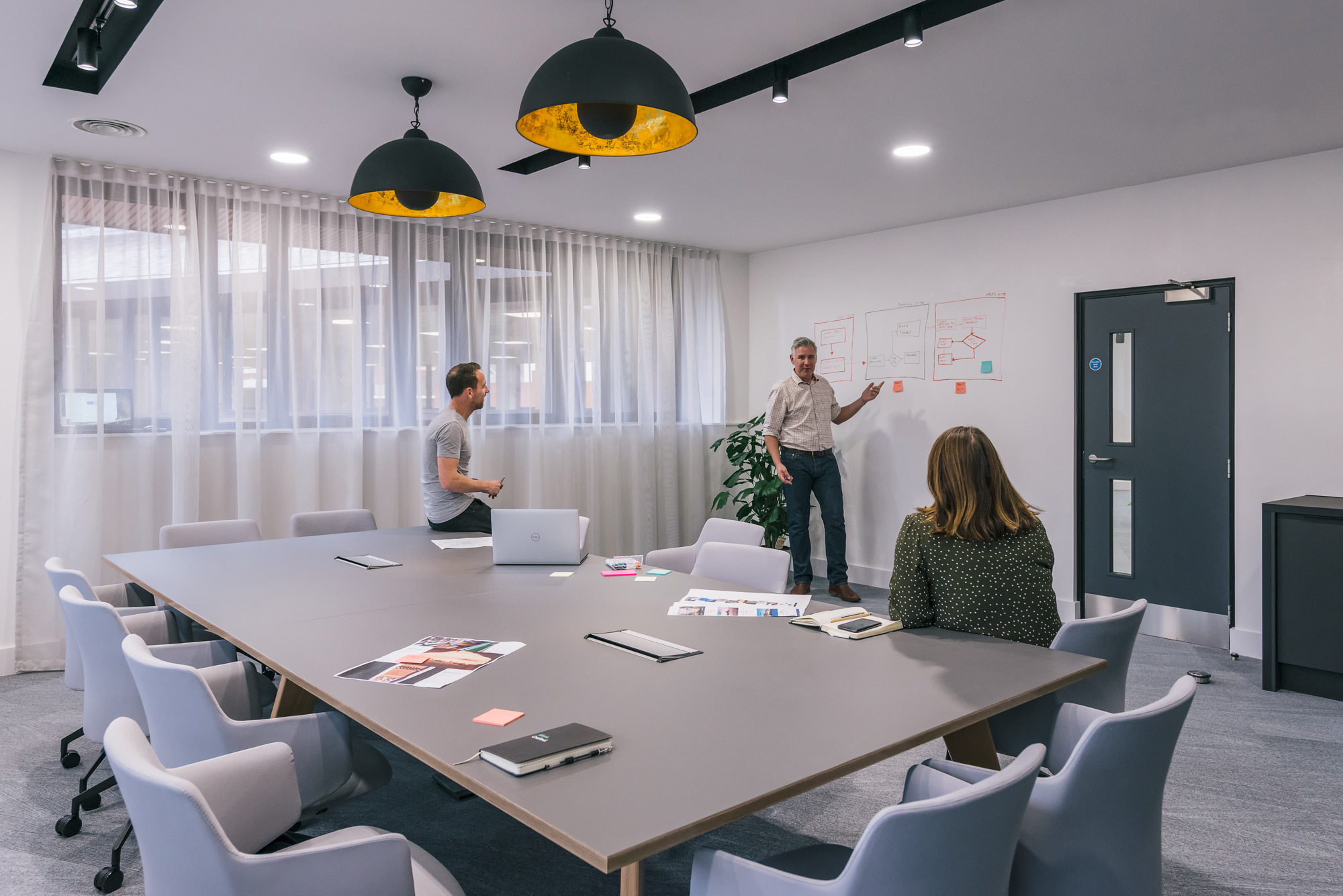Unlocking the potential of a workspace involves more than just office desks and chairs. It’s about orchestrating an environment where productivity thrives and creativity flourishes. When it comes to office interior design, effective space planning is certainly a vital tool. From optimising layouts to strategically placing collaborative zones, effective space planning lays the foundation for a thriving and harmonious work environment.
Space planning is the systematic arrangement of physical environments to support the activities conducted within them. Its primary objectives include maximising functionality, efficiency, and user satisfaction while adhering to spatial constraints and organisational requirements. By strategically allocating resources and delineating areas based on their intended functions, effective space planning can help you create harmonious and purposeful environments conducive to productivity and employee wellbeing.
To ensure effective allocation and use of lab or office space, the following elements must be present:
Central to effective space planning is the optimisation of workflow dynamics. This involves analysing how individuals and teams interact within the space, identifying bottlenecks e.g. not enough meeting room space or private space for 1-2-1’s, and streamlining processes to enhance productivity.
Ensuring smooth circulation throughout your workspace is vital for user comfort and efficiency. It is important to consider factors such as traffic flow, accessibility for individuals with disabilities, and the ergonomic arrangement of furniture to facilitate movement and minimise congestion.
Space is a valuable resource, especially when you consider the rising cost of renting office space in the UK. Optimising its use is essential for maximising utility and cost-effectiveness. To achieve spatial efficiency, balancing the allocation of floor area with functional requirements is crucial. This may involve implementing flexible layouts for hybrid staff, multi-functional spaces e.g. for team briefings and wellness, and innovative storage solutions to make the most of available square footage while accommodating your company’s evolving needs.
Effective space planning involves the delineation of distinct zones tailored to specific activities. By allocating functions to designated areas based on their unique requirements, you can enhance organisation and user experience. For example, at Mishcon de Reya, they separated their client facing zone to their private working area. Read more about the project here.

Identifying the specific needs and requirements of your lab or office can help set the foundation for effective space planning. In doing so, it will be easier to develop technical design solutions that optimise workspace functionality and foster engagement. Consider the following steps:
Effective space planning begins with a thorough examination of your business goals and objectives. By aligning spatial design with your company’s mission, vision, and strategic priorities, you can ensure that your workspace serves as a catalyst for achieving success. Whether it’s fostering innovation, enhancing collaboration, or optimising operational efficiency, focusing on the broader goals enables you to identify solutions that support your organisation’s growth.
As diverse departments and teams have unique requirements and work processes, an in-depth analysis of your current workplace is required to understand their specific needs. This involves assessing workflow patterns, communication dynamics, and spatial requirements to identify opportunities for optimisation and enhancement.
A great tool available to most companies to assess this is Microsoft Viva, which reviews your staff’s time spent in meetings, away from the office, and hybrid working patterns. Plus having workspace coordinators on the ground to gain feedback directly from department heads is crucial for understanding current pinch points in optimisation of their staff.
By tailoring space planning strategies to accommodate the distinct needs of various groups within your organisation, you can create inclusive and supportive environments that encourage all employees to thrive.
The input of your staff is invaluable in shaping a workspace that meets their needs and preferences. Soliciting input regarding office/lab layout, amenities, and environmental factors can give you insights not just into their preferences but also their pain points. From email surveys to direct working groups, this approach fosters a sense of ownership and engagement amongst employees while allowing you to make informed design decisions that prioritise user satisfaction and wellbeing.
Analysing your existing workspace can help uncover inefficiencies, obstacles, and areas for improvement. This may involve evaluating factors such as spatial constraints, ergonomic deficiencies, noise levels, and environmental comfort. Through proactive problem-solving and continuous improvement of your office interior design, you can create an environment that enables your staff to perform at their best.

Cultivating a workspace that maximises productivity requires a strategic approach to space planning. By adhering to the following key principles, you can transform your lab or office into a dynamic environment that inspires creativity, encourages collaboration, and supports focused work.
Harnessing the power of natural light and providing access to outdoor views can significantly impact employee well-being and productivity. It also makes any space look bigger than it actually is. By incorporating large windows, skylights, and open sightlines, you can infuse your workspace with a sense of vitality and inspiration, promoting alertness and mental clarity amongst its occupants.
Balancing collaborative spaces with areas for focused work is essential for accommodating different work styles and tasks. Consider creating zones tailored to specific activities, such as brainstorming sessions, team meetings, and individual concentration. By strategically setting up collaborative hubs equipped with writable surfaces, presentation tools, and comfortable seating, you can encourage spontaneous interactions and creative exchanges. At the same time, quiet zones equipped with privacy screens, meeting pods, and acoustic treatments provide sanctuaries for undisturbed focus and deep work, especially amongst neurodiverse employees.
Adjustable furniture, supportive seating, and ergonomic accessories can be integrated into your workspace. Not only will this accommodate individual preferences and promote proper posture, but it can also enhance comfort and reduce the risk of musculoskeletal injuries. Furthermore, ensuring that workstation heights, monitor positions, and keyboard placements meet ergonomic guidelines helps foster a healthier and more productive workforce.
Flexibility is key to accommodating evolving needs and maximising space utilisation. By embracing agile design solutions, you can empower your staff to personalise their environment and optimise their workflow.

Applying practical yet ingenious solutions to space planning can be a game-changer and significantly boost productivity and overall workplace satisfaction. Consider the following strategies to revolutionise your workspace.
In densely populated work environments, maximising every inch of available space is crucial. You can create additional space by installing shelving units, cabinets, and storage systems that ascend from floor to ceiling. Not only does this approach increase storage capacity, but it also promotes organisation and decluttering, allowing for efficient access to essential items while keeping work surfaces clear.
To ensure flexibility, consider incorporating movable partitions and modular furniture that can be quickly reconfigured to accommodate changing requirements. For example, modular workstations, mobile partitions, and flexible seating arrangements allow you to transform spaces quickly and cost-effectively, supporting collaborative sessions, individual tasks, and group meetings. This agile approach to space planning promotes adaptability and encourages innovation, enabling your staff to respond swiftly to shifting priorities and work dynamics.
Encouraging informal interactions and moments of relaxation is essential for nurturing a vibrant and inclusive workplace culture. Designate breakout areas equipped with comfortable seating, writable surfaces, and refreshment stations to facilitate impromptu meetings, brainstorming sessions, and social gatherings. These informal spaces can serve as hubs of creativity and collaboration that foster spontaneous exchanges and strengthen interpersonal connections.
Agile workstations equipped with adjustable desks, ergonomic seating, and personal storage allow employees to customise their environment according to their preferences and tasks. In addition, flexible collaboration areas outfitted with adaptable furniture and multimedia technology support diverse modes of interaction, from formal meetings to informal discussions.
Biophilic design principles emphasise the integration of natural elements and patterns into the built environment to promote well-being and connection with nature. As such, consider incorporating natural design elements such as greenery, natural light, and organic materials into your lab or office’s interior design. For example, living walls, indoor gardens, and strategically placed windows bring nature indoors and enhance ambience. This helps improve air quality, reduce stress, and increase cognitive function, leading to greater productivity and creativity.
The principles and strategies of effective space planning can serve as invaluable tools when designing and building workspaces that promote productivity and creativity. By aligning organisational goals, understanding diverse needs, and addressing existing challenges, you can transform your workplace into a vibrant environment that inspires innovation and collaboration.
At COEL, we specialise in translating your vision into tangible workspace solutions. With over 30 years of experience in space planning and workspace design, we can help you build tailored work environments that foster productivity and ignite creativity. Get in touch today!